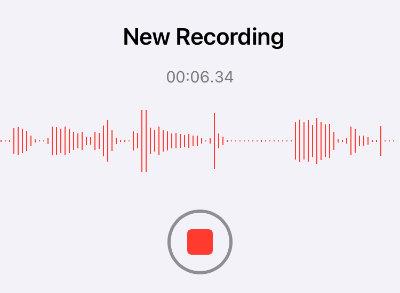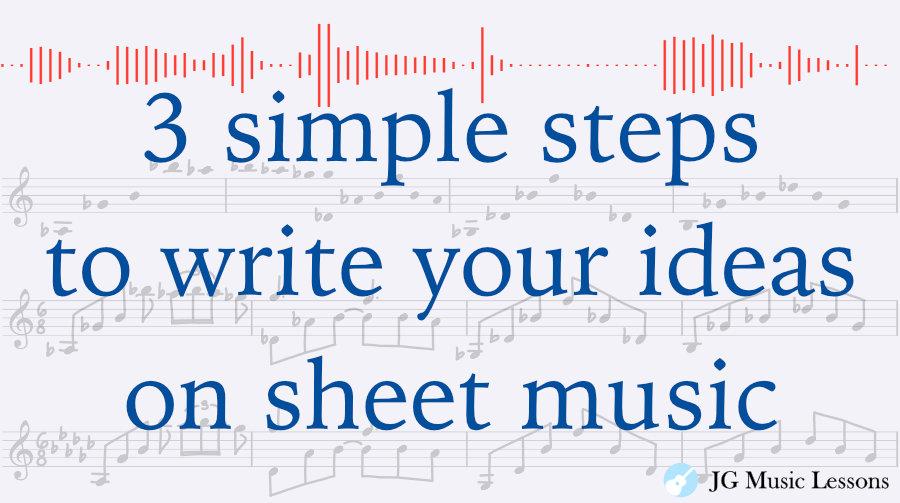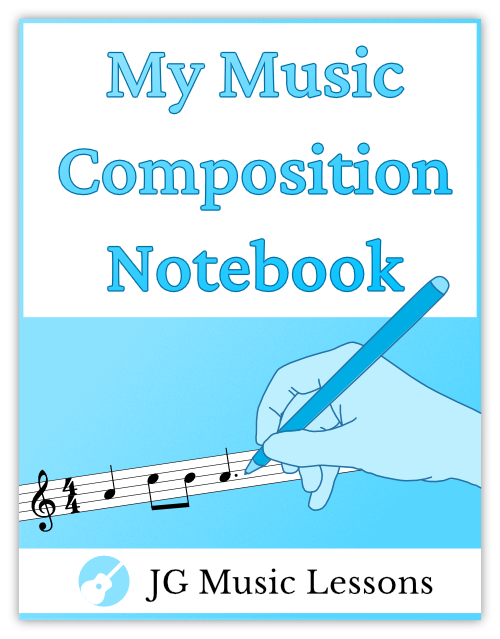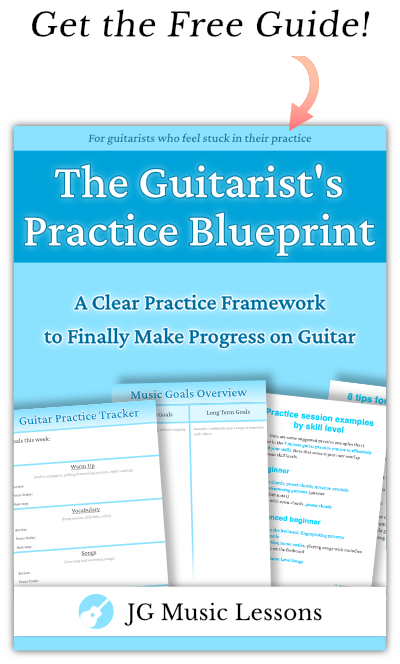Have you ever thought about writing music but don’t know how to get started?
In this post, you will learn a simple approach on how to be able to write your ideas on sheet music. I will take you through the exact process I used with an idea that I had saved on my phone a while back.
After learning this process, you’ll find out that writing down your musical ideas is not as hard as you thought. Let’s get started!
1. Capturing your musical idea
If you don’t have a music recording program, the best and quickest way I recommend capturing a musical idea is by recording it into your phone. Most phones should have an audio recording app that come with it.
I usually use the Voice Memos app that comes installed on the iPhone but you can use something similar on another device. You can also record a video to be able to playback your idea.
The quicker you can capture the idea, the better while it’s still fresh in your memory and ears.

I recommend recording your idea before even trying to write it down. Otherwise you might forget some parts while trying write and recall it at the same time.
Whether you’re singing, humming or playing the idea on your instrument, save it first and then we’ll look at how to organize those ideas in the next steps.
Recording example
To take you through this process, here is a short idea of a guitar riff that I recorded on my phone a while back.
2. Writing the notes
After you record your idea, you want to start figuring out what those notes are and maybe some rhythms. If you sang your idea, take an instrument or online tool like this virtual piano and start to match each note you sang while writing them down one by one. Include any sharps or flats next the notes as well.
Don’t worry about the elements such as key signature or time signature at this point, you just want to have the notes down for your first draft. It’s okay if you don’t know how the notes fit into measures yet because you can edit those elements afterwards.
Writing your first draft
As you replay your recording, you can simply write the note heads down without rhythm. For example, here is my first rough draft of the guitar riff audio recording.

You can use a tool like the My Music Composition Notebook that has printable sheet music and simple guides on notation or use software such as Musescore where you can input notes from your computer.
3. Defining essential elements
Now that we have the notes down, we can work on adding other essential elements. Keep in mind that they don’t have to be done in this exact order.
Writing the time signature
To write the time signature, we have to find out where the strong beats are emphasized to know where the notes fit in a measure.
For example, I’m writing the number 1 above certain notes where I hear an emphasized beat like this:

With the written emphases and re-listening to the recording, I can hear that strong beats are repeated every 6 beats. Here is the idea re-written using a 6/8 time signature.

To learn more about how this works, check out this simple guide on time signatures.
Writing the key signature
Also, since you know what accidental notes are included, you can start to figure out what key signature the idea is in. When playing back the music, I’m hearing for which note sounds like the home key.
For the guitar riff idea, I heard Gb as the home key, so I wrote it again using the Gb key signature. Here is the idea cleaned up even more after adding the key signature.

To learn more about how this works, check out this simple guide on key signatures.
Developing your musical idea
From this point on, you can further develop your idea such as adding more parts, creating variations that complement your idea, or creating a section of a song. Now that you have something written out on sheet music, you have a good starting point to continue composing a song or you can simply save a musical idea to revisit it later on.
There are different ways you can develop your ideas. For example, you may come up with a melody first and then think of chords that complement it. Or you might have a chord progression in mind and then think of a melody that sounds good over those chords.
If you are still new to the writing process, start with short ideas that you can write out in one sitting. As you continue to practice this skill, you’ll be able write out your ideas more easily and hopefully turn them into your own songs.
In this post on 7 steps to start composing your own music, I lay out a blueprint that you can use to develop your musical ideas.
Wrapping up
Knowing how to write your musical ideas is an incredibly useful skill to know as a musician. You’ll learn to save ideas, develop your composition, and also share with them other musicians.
Another benefit of writing down music is that it can improve your ability to sight read music overtime as you become familiar with working with different music elements on sheet music.
It would certainly be helpful to get a good grasp of music notation symbols work before diving into writing your own ideas. You may also want to check out these 6 benefits of recording to practice music.
If you want a tool to help you bring your musical ideas to reality, check out My Music Composition Notebook.
📘 Get the free guitar practice guide here!
All the best,
JG
Stop guessing and finally make real progress with the FREE Guitarist's Practice Blueprint! 🎸
Get it sent straight to your email!
Take your skills beyond this lesson with Pro perks like:🏁 Full Roadmap Content
Structured lessons in sequence so you always know what to practice next.
🎼 Full Song Lessons
Break down your favorite songs step by step, and play them with confidence.
📙 Exclusive Lesson PDFs and Ebooks
Get access to a growing library of clear, downloadable resources—save time and skip the clutter.
🎟️ Free Monthly Codes
2 free downloads every month — up to $20 value (more with ebooks).
🎁 Store Discounts
Save 50% off on all song PDFs, charts, audio tracks, bundles, and design printables.
🚫 Ad-Free Learning
Focus better with a distraction-free environment.
💬 Member Support
Got questions? We’ve got your back, helping you stay on track!




